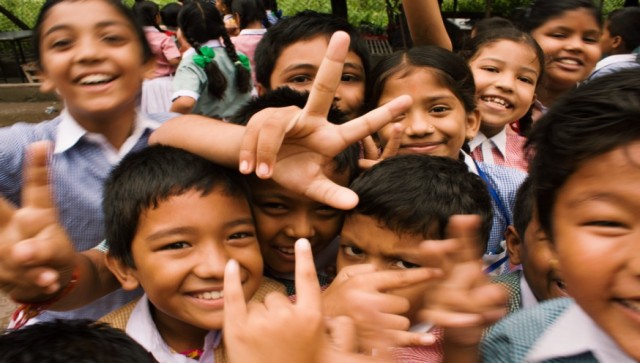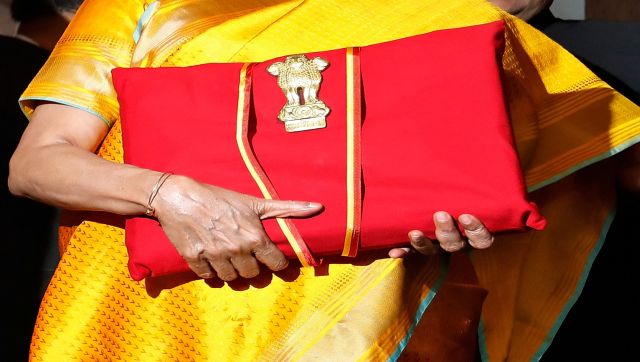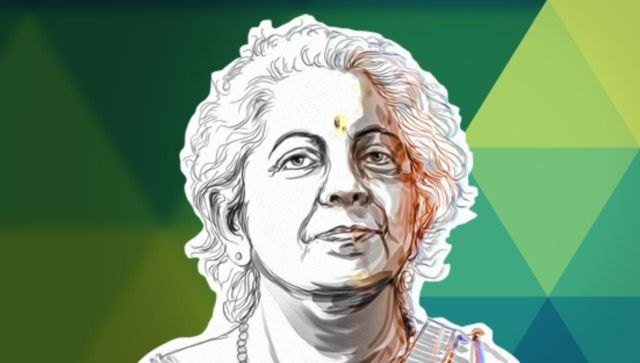Editor’s Note: A network of 60 reporters set off across India to test the idea of development as it is experienced on the ground. Their brief: Use your mobile phone to record the impact of 120 key policy decisions on everyday life; what works, what doesn’t and why; what can be done better and what should be done differently. Their findings — straight and raw from the ground — will be combined in this series, Elections on the Go, over a course of 100 days.
***
Nagada: In 2016, Odisha’s Jajpur district made headlines after the death of 22 malnourished tribal children. These children belonged to the Juang tribe that lives in Nagada, located in a hilly region with poor access to health and infrastructure facilities. The tragedy forced the Odisha administration to take immediate steps to provide facilities such as clean drinking water and roads connecting the village to the nearest town, Kaliapani.
While a lot has changed for the better since then, the fight against the biggest social cause of such health issues — child marriages — continues to this day. Child marriage is widely practiced by the Juang tribe as part of their culture, and according to villagers, children were either married at the onset of puberty, or even before that, in some cases.
“As soon as boys start to grow facial hair, we would marry them off. This was the tradition here. Girls were married at a much younger age as compared to boys. It might sound odd to outsiders, but child marriages were the norm here up until now,” said Chaita Padan, a villager from Upper Nagada.
Health issues in children, such as anaemia and stunted growth, began to come to light after doctors started making biweekly tours of the village. With this, villagers began to get educated about the need for proper practices related to health, hygiene and nutrition.
Seeing the ill-effects of child marriages, the villagers of Nagada made the collective decision to ban the social evil. They decided that boys would be married at 21 and girls at 18. The village has also passed a resolution in this regard.
It was hard for the largely illiterate population of Nagada to bring out this change in mindset. It was made possible by community-level workers, who, with the help of the State Department of Women and Child Welfare, created awareness about the legal and health implications of child marriages.
“The villagers have requested the department to do more to create awareness about this issue, saying they want to work with the department to end this social practice. Over the past three years, with the help of the government, a lot has changed for local residents,” said Ghasiram Panda, programme manager with NGO Action Aid, who works in the village.
Dr Shiva Saran, a gynaecologist said, “Immature physical development of a young mother can affect the health and nutrition of the child. Child marriages, especially if the girl is 15 years or younger, could prove risky for both the child and the mother.”
According to the residents of Nagada in Odisha, most fathers in the village are often teenagers, and the mothers are even younger. Lack of awareness about family planning measures has also been a stumbling block in dealing with maternal and child health issues. Many young couples have four to five children each. Also, as they could not ensure the survival of all children in the past, the size of families in the villages is usually large.
A visiting doctor in Nagada’s Sukinda block said teams try to visit the village twice a week to take stock of the healthcare needs of the population.
“Villagers are often reluctant to follow up with the medical teams about their treatment. Even though medicines are given free of cost, many refuse to consume them. Many are also victims of superstition and try to use religious rituals or other local practices to ‘cure’ or ‘ward off’ diseases,” said Dr Sukanta Mahapatra, a visiting doctor.
Bibhuti Padan, a villager from the area, said: “Whenever someone in the village falls ill or has a fever, we organise kukuda pooja (chicken worship) to appease the god and thwart any untoward incident. We seek medical assistance only as a last resort.”
The Odisha government is taking measures to improve maternal and child health in Nagada. Through corporate social responsibility funds, a mini anganwadi (daycare centre) was also recently established to ensure the right nutritional intake among children in the village.
Anganwadi worker Lakmi Pradhan said, “We help monitor the height and weight of the children here and keep track of their health. We provide eggs, chattua and other nutritional supplements to ensure the proper physical development of the children.”
Ward member of the area, Basanti Pradhan, also echoed the belief that child marriages should be banned for the health and well-being of villagers.
Saroj Mahakur, Programme Director of NGO Aspire, said: “Much has changed on the ground. Earlier, villagers had the habit of consuming only rice with large quantities of water or salt without any vegetables. Now, they have learnt to include vegetables in their diet. Although the overall physical health of the villagers has improved, the health of children is still a cause for concern.”
Mahakur also pointed out that parents had started to send their children to nearby towns to stay at hostels for Scheduled Tribes and attend schools run by the Odisha government. Most of these towns are around 20 to 25 kilometres from the village. Many girls, he said, are now being able to study beyond Class 9, and their education has had a positive impact on families in the village with regard to their awareness about social and health issues.
While a few state departments have consistently been working with the villagers to improve the situation on the ground, others have faltered in implementing programmes. The lack of consistent follow-ups and monitoring of different government initiatives is taking a toll on the positive changes that were brought about in the community through liquor de-addiction or livelihood programmes.
Take, for instance, the taps the local administration had installed in the villages to supply clean drinking water. Most of these taps now run dry, and with no one monitoring the situation, this is likely to lead to health problems in future.
“Many taps in the village no longer function. Women are forced to find other sources of drinking water, sometimes having to trek a few kilometres to fetch water. The government needs to continually monitor the facilities they provide us,” said Guru Padan, a resident of Nagada who works as a daily-wage labourer.
A visit to the village in the first week of May revealed a sorry situation. Many taps installed were not functioning, and the work on the road to connect the mountain town of Kaliapani with Nagada has hardly progressed. The connecting road along the mountainous terrain is rocky, muddy and in poor condition, ensuring that vehicles negotiate the stretch only at a speed of 20 kilometres per hour.
The toilets the state government constructed in the village are also no longer functional. Villagers tend to use the toilets to park their bicycles as there is no water supply in the facility. There are also hardly any youngsters with mobile phones in the village as the area barely receives any network for mobile communication.
Politics works faster than development
The state and Union governments have neglected Nagada, which falls under the Jajpur Lok Sabha constituency, with regard to implementing some of its flagship programmes. There are still several kuccha houses in Nagada despite the Biju Janata Dal government’s promises from 2014 to construct pucca houses for all in Odisha by the end of its term. The party’s election manifesto also promised to make all kuccha roads pucca, neither of which have been fulfilled.
The BJP-led Central government had also promised cooking gas cylinders to poor households, but this has yet to materialise in the village.
Interestingly, Union Petroleum and Natural Gas Minister Dharmendra Pradhan, whose ministry initiated the LPG scheme, hails from Odisha. Pradhan has been trying hard to boost the image of the BJP in the state, but even he has not been able to ensure that the benefits of the Ujjwala scheme reach this village, where everyone uses wood from the surrounding forests as fuels to cook on mud stoves.
For now, it seems like politics and politicians can and often do reach Nagada faster than any development. Despite Nagada being located in a remote area, BJD pamphlets of local candidates seeking votes can be found strewn about the village. Villagers also stated that the BJD, Congress and other party candidates had visited Nagada to campaign for the Assembly elections.
“Candidates of the Congress and BJD visited our village to seek votes. Local contractors told us they would take us to the nearest polling booth in their vehicles. Most of us are planning to go with them to cast our votes,” said Gula Padan, a Nagpada villager.
The Jajpur constituency has been a winning field for the BJD. BJD MP, Rita Tarai, represented the seat, winning it in 2014 by a margin of 3,20,271 over Congress’ Ashok Das. Jajpur will go to polls in the last phase of polling in Odisha on 19 May.
While the country is in election mode, most of Nagpada villagers seem to not know who Prime Minister Narendra Modi is and also seem clueless about Chief Minister of Odisha Naveen Patnaik. Although largely clueless about politics and political leaders, the villagers continue to pin their hopes on the state government to take care of their health, development and infrastructure needs.
The author is a Bhubaneshwar-based freelance writer and a member of 101Reporters


)




)
)
)
)
)
)
)
)